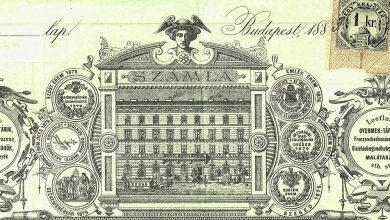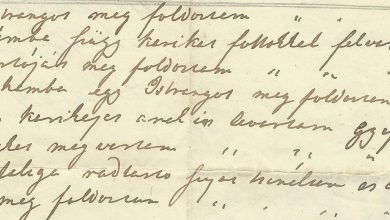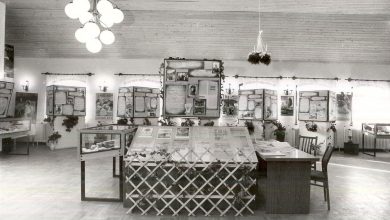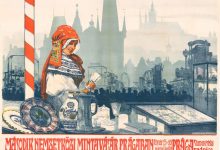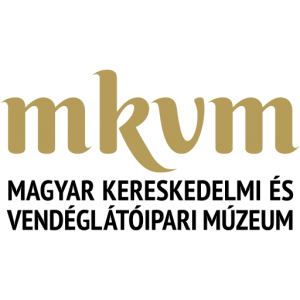Collection data:
Collection manager: Dóra Hajabácsné Dobos PhD, Museologist
Number of pieces in the collection:
Online availability: Online Database of Historical Documentation Collection of Hospitality
Researchability: The collection can be researched locally, on advanced registration.
About the collection:
More than half of the collection consists of menus, menu cards, price lists and program booklets, the rest consists of documents, archival material and small print.
The collection of the first group essentially summarizes various forms informing the guests about the range of goods and services, which represent source material in several respects:
• from the supply side: the selection of food and drinks, their abundance, composition, names, prices,
• from the side of consumption: eating habits, the number and order of meals and drinks,
• social and corporate events, aspirations, manifestations,
• the taste and style in printing techniques and decorations.
The menus include the complete range of restaurants and taverns that often change (lunch, evening, daily, weekly), the menu cards include the one-time menu, the price lists include mainly the relatively constant offer of cafes, pastry shops, bars, buffets, and the hotel room prices, the program booklets usually include the program of the night clubs.
The menu in today’s sense appeared in France and Austria in the 1780s, and in Hungary in the 1810s. The two oldest known examples here in Hungary date back to the 1830s. After that, until 1892, we know only ten or so of menus, and of these, the few original copies in our possession naturally represent the greatest value. From the turn of the 19-20th century. From the turn of the 20th century, there are several menus, usually more ornate and larger in size, and drink menus separated from the menu appeared during this period.
The oldest known Hungarian menu card dates from 1863, but we already have dozens of menu cards from the 1870s and hundreds of menu cards from the 1900s in our collection. Most of them are made for festive occasions, with decorative, often artistic design, containing the food menu, but in many cases they also contain drinks, musical numbers, speeches and other communications.
We store the menus and menu cards from before and after 1900, and before and after 1945, seperatly from Budapest, the country and foreign groups, including stores, localities in alphabetic order.
The document and archival material is a numerically smaller part of the documentation collection, but represents same value as the former, which is stored in the order according to the register. This group contains a wide variety of materials, which can be divided into 4 main groups: a.) document sets, b.) documents, c.) business records and d.) other documents.
a., The document sets contain a mix of documents of various ‘genres’, which include documents belong to various associations, boards, circles, companies, etc. of the hospitality industry. In addition, we also keep legacies related to certain families, as well as a considerable collection of documents relating to individual stores.
b., Among the documents, we have numerous birth certificates, baptismal and marriage certificates, etc. providing data for biographies. Some of the wills in our collection are considered curiosities precisely because of their small number. The general or apprenticeship school, moral, belonging, etc. certificates, praise, acknowledgment, greeting, awarding, etc. diplomas, assistant and master’s degrees, acceptance letters are valuable and interesting on the one hand because of the recipients and on the other hand because of the signatories.
c., The material of business records is very rich: business books, correspondence, administrative and labor documents and other records are included. First of all, we mention the guest books, which preserve the signatures, appreciative entries, poems, and drawings of countless domestic and foreign celebrities of political, scientific, artistic, and literary life. The oldest of them is the guest book of Apostolok Söröző (Apostles Pub) (1903-1912). In the second place we highlight the so-called menu books. These are daily handwritten lists by the head chef of restaurants, which served as the basis for writing the menu, and which provide data in terms of the variety of food on offer. The business books contain a variety of numerical data, in which the additional data recorded in a diary manner are particularly important. We have a small number of hotel registration books, e.g. from the Eszterházy Hotel in Tatatóváros from the years of 1919-1920 and 1946-1948. Invoices and business letters contain important information, invoices are particularly valuable in terms of appearance as well. Other business documents include circulars, tax returns, balance sheets and contracts.
d., We cannot underestimate the importance of other documents that cannot be classified as above. For example poems, sheet music, conversion tables, guest lists, etc. are listed here. Among them, Alajos Reinprecht’s march of hotel business from 1902, or Alajos Kutschera’s march of restaurant business from 1893 are interesting. Finally, the set of recipes written by hand on free sheets or in notebooks, is very significant.
One part of the so-called small prints also play an additional, illustrative role, while others are significant historical source material. ‘Small print’ is not a term referring to size or size, it only refers to the fact that it usually consists of a single page, i.e. not several pages or bound publications. The forms in this group are collected and stored in 12 topics: price lists; leaflets and small posters; invitations and greetings (this also includes contacts, pocket calendars and memory cards); seating cards and dance routines; stamps and company stamp imprints; meal tickets; entrance and transport tickets; maps, plans, site and floor plans; work books, identity cards and obituaries; standards; program brochures of professional events and finally other small prints that cannot be classified elsewhere.
Structure of the collection:
- Menus
- Menu pages
- Price lists
- Drink menus
- Program booklets
- Diplomas
- Archival material
- Birth certificates, baptism and marriage certificates
- Legacy documents
- Plans, site and floor plans
- Workbooks
- Certificates and obituaries
- Standards
- Paper napkins
- Luggage tags
- Beer coasters
- Stationery letter papers


